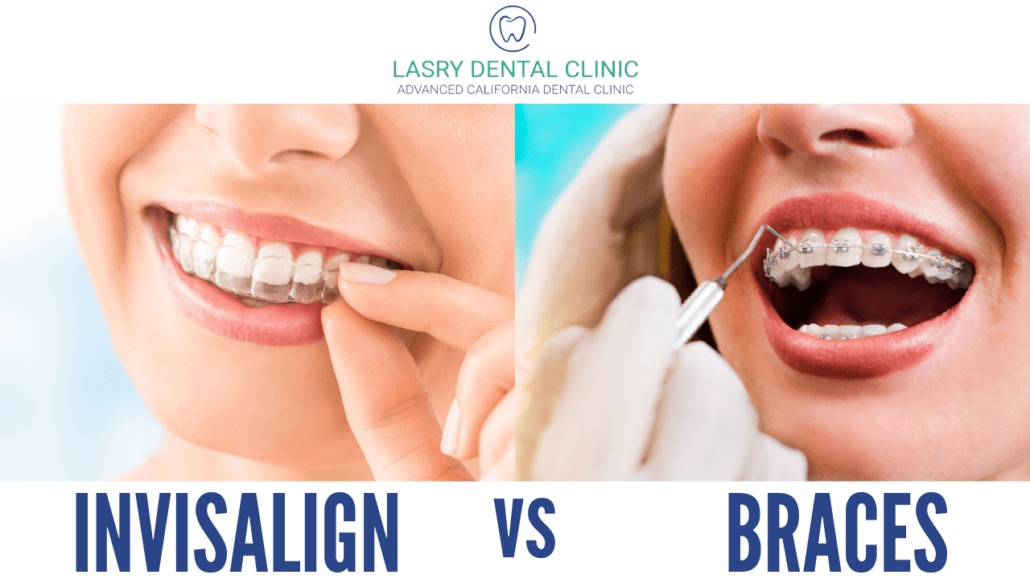Invisalign vs. Standard Dental braces: Which Alternative Is Right for You?
When considering orthodontic treatment, the option between Invisalign and standard braces provides a number of essential factors that merit cautious assessment. Invisalign supplies a discreet option with removable aligners, while traditional dental braces supply a much more visible yet effective solution for extreme misalignment.
Overview of Therapy Choices

In contrast, typical braces contain metal braces and wires that are bound to the teeth. This method uses constant stress gradually to attain positioning. While reliable for complicated orthodontic issues, traditional dental braces call for normal sees for modifications and can pose obstacles in maintaining dental health due to the problem of cleaning about wires and brackets.
Both alternatives have their values, and the selection commonly pivots on particular dental conditions, way of living choices, and individual conformity. Inevitably, consulting an orthodontic professional is vital for figuring out the most appropriate treatment strategy customized to private demands. Comprehending the subtleties of each choice can significantly influence the overall success of orthodontic therapy.
Visual Considerations
A significant aspect influencing the choice in between Invisalign and typical braces is the visual charm each treatment offers. Invisalign aligners are crafted from clear plastic, making them basically undetectable when used.
In contrast, typical dental braces consist of metal braces and cords, which can be much more noticeable. While developments in orthodontic modern technology have actually caused the growth of smaller sized brackets and colored elastics, standard braces still maintain an even more obvious profile. For some people, the visibility of braces might deter them from seeking required treatment.
Ultimately, the selection between Invisalign and conventional braces might hinge on personal preferences pertaining to aesthetics. Individuals that prioritize discernment typically lean towards Invisalign, while those that are much less worried about presence may choose for standard dental braces. Understanding the visual ramifications of each choice is essential for making a notified choice that straightens with one's way of life and choices.
Comfort and Convenience

In terms of comfort, Invisalign aligners are removable, making it possible for people to enjoy their favorite foods without constraint and preserve optimum dental health. Brushing and flossing are streamlined, as the aligners can be obtained throughout these regimens, whereas conventional dental braces require cautious maneuvering around cords and brackets.
In contrast, conventional dental braces require routine adjustments, making them less practical for those with hectic schedules. Overall, the convenience and comfort of Invisalign make it an attractive choice for many people looking for orthodontic treatment.
Treatment Period and Performance
While both Invisalign and conventional dental braces are reliable in fixing oral imbalances, the period of treatment can vary dramatically in between the two choices. Commonly, Invisalign treatment can take anywhere from 12 to 18 months, depending upon the intricacy of the instance. The clear aligners function by gradually moving teeth into their preferred placements, and normal follow-ups with an orthodontist aid ensure progress stays on the right track.
On the other hand, typical dental braces often require a longer commitment, typically ranging from 18 months to three years. This is because of their fixed nature and the use of braces and cables, which can be a lot more efficient for extreme imbalances and intricate instances (Invisalign). The treatment efficiency of conventional braces is well-documented, as they enable accurate adjustments and greater control over tooth movement
Ultimately, the choice in between Invisalign and traditional dental braces might depend upon both the expected therapy duration and the specific dental concerns available. Consulting with an orthodontist is vital, as they can supply tailored recommendations based on private requirements, making certain the chosen technique aligns with preferred results and durations.
Cost Contrast and Insurance Coverage Choices
Expense plays a considerable function in visit the decision-making procedure for individuals considering orthodontic therapy, whether selecting Invisalign or conventional braces. Typically, the price of Invisalign varieties from $3,000 to $8,000, while conventional dental braces usually cost in between $2,000 and $6,000. Aspects influencing these prices include the intricacy of the instance, the duration of therapy, and geographical location.
Several Home Page oral insurance coverage strategies supply partial protection for orthodontic therapies, but the specifics can vary extensively. Normally, traditional braces might be much more frequently covered by insurance strategies compared to Invisalign, which some insurance companies categorize as an aesthetic procedure.
Furthermore, numerous orthodontic techniques use versatile layaway plan, making both therapy options much more obtainable. People should inquire about prospective financing choices and discount rates for in advance repayments. Examining the overall expense, consisting of insurance coverage advantages and layaway plan, is necessary for making an educated choice that lines up with both aesthetic preferences and budget considerations.

Verdict
In recap, the selection in between Invisalign and standard dental braces rests on several elements, including aesthetic preferences, convenience, therapy period, and expense. Invisalign provides a discreet, removable alternative that promotes dental hygiene and dietary flexibility, while typical dental braces may be much more suitable for intricate oral problems and typically come at a reduced cost point. Ultimately, consultation with an orthodontist is necessary to analyze private situations and determine one of the most proper treatment option for attaining ideal dental placement.
When thinking about orthodontic treatment, the selection between Invisalign and traditional dental braces presents numerous crucial elements that warrant cautious evaluation.Contrasting Invisalign and traditional dental braces reveals distinctive treatment alternatives for orthodontic adjustment.While both Invisalign and typical braces are reliable in fixing oral misalignments, the period of treatment can differ considerably in between the two choices.Price plays a considerable duty in the decision-making process for people considering orthodontic treatment, whether deciding for Invisalign or traditional dental braces.In summary, the option in between Invisalign and conventional dental braces hinges on you could try this out numerous factors, consisting of visual preferences, comfort, therapy period, and expense.
 Ariana Richards Then & Now!
Ariana Richards Then & Now! Bug Hall Then & Now!
Bug Hall Then & Now! Richard Thomas Then & Now!
Richard Thomas Then & Now! Lisa Whelchel Then & Now!
Lisa Whelchel Then & Now! Catherine Bach Then & Now!
Catherine Bach Then & Now!